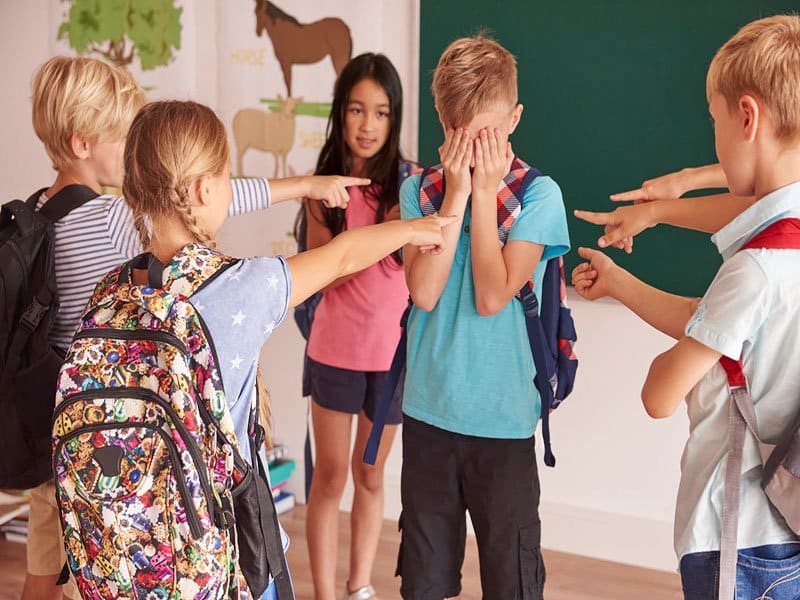Creating a safe classroom environment is a key component of any school’s success. Bullying can have serious repercussions on the mental and physical health of students, so it is important for teachers and administrators to take proactive steps to prevent it. Bullying prevention strategies can range from fostering an atmosphere of respect to developing clear policies and consequences for inappropriate behavior. This guide provides an overview of the best bullying prevention tips, from strategies to foster acceptance to measures to address bullying when it occurs. By following these tips, teachers can create an environment in which students feel safe and respected, allowing them to learn, grow and reach their potential.
Understanding bullying

Bullying is a type of aggressive behavior that occurs between children, teens or adults. It can occur in person or online, and can take many forms. Although bullying can occur between people of any age and social group, it is most common among teens and young adults. Bullying can occur at school, in the workplace, in the neighborhood, or online. Anyone can be bullied, and it can have serious consequences. Bullying is more than just cruel words or an isolated incident. It is repeated behavior that hurts or intimidates someone. Bullying can take many forms, including verbal or written abuse, threats, intimidation, intimidation, social exclusion, cyberbullying, and sexual or racial harassment.
Establish a culture of acceptance to prevent bullying
To foster a feeling of acceptance in the classroom, it is important to create an environment where students feel comfortable sharing their thoughts and ideas. Asking students about their interests, hobbies and goals for the future can help you get to know them better as individuals. Connecting with students on a personal level can alleviate feelings of anxiety and inspire positive interactions in the classroom. In addition, it is important to acknowledge your students’ identities.
Establish clear expectations and rules to prevent bullying
All students should have access to a clear set of rules and expectations. This can be accomplished through a series of classroom discussions or by creating an “Intervention Plan.” An Intervention Plan consists of a set of “Levels of Intervention” that dictate what a teacher should do in response to a given situation. For example, a teacher might create an “Intervention Level” for dealing with disrespectful language, which includes a list of steps to take when students violate this rule. These intervention levels should be established in writing, posted in the classroom, and reviewed periodically with students. It is also important to establish standards for appropriate behavior. It is important to maintain appropriate boundaries with students, especially with regard to communication. It is never appropriate for a teacher to send flirtatious or sexual messages to a student. Such actions violate a student’s trust and can have lasting effects. To maintain appropriate boundaries, it is important to limit communication to academic matters.
Promoting dialogue and communication as a form of bullying prevention

Communication is crucial to a productive classroom environment. It is important to encourage open dialogue among students, even when they differ in their opinions. By encouraging students to discuss their ideas and opinions, they become more engaged in the classroom and better prepared for college. Teachers can encourage dialogue among students through peer discussions, small group work, and simulations. In addition, it is important to communicate with students’ families. By communicating with parents, teachers can identify potential barriers to student success, such as financial or family stresses. Teachers can communicate with parents in a variety of ways, such as holding regular meetings with them and inviting them to participate in classroom activities.
Develop a bullying prevention policy.
Creating a clear bullying prevention policy is an important step in preventing bullying in the classroom. An anti-bullying policy clearly outlines what is considered bullying and what the consequences are for non-compliance. It is important to review the policy periodically and make any necessary changes. It is essential that both teachers and parents are aware of the bullying prevention policy. This can be accomplished through regular parent-teacher meetings as well as parent-teacher association meetings. A common way to summarize a school’s bullying prevention policy is through a poster or brochure, which can be displayed throughout the school.
Teaching students to spot bullying
Students need to be trained to deal with bullying when they see it. It is important to teach students how to recognize bullying and what to do when they see it. This can be achieved through class discussions, role-playing and interactive lessons. It is important to equip students with the skills necessary to deal with bullying and report suspicious incidents. It is also important to encourage students to speak up when they are being bullied. It is important to foster an environment that promotes speaking up, especially among students who are frequently bullied. Talking to students, listening to their experiences and providing support can help them feel less alone and encourage them to speak up when they are being bullied.
Identifying warning signs of bullying
Teaching students to recognize the warning signs of bullying allows them to better identify when their peers are being bullied. By educating students about their rights and the warning signs of bullying, teachers can help them feel safe and empowered. These methods can be used in the classroom or in one-on-one meetings with students. Identifying the warning signs of bullying can be difficult, as bullying can take many forms. However, there are several indicators that can help students identify bullying. These include feeling stressed or anxious, avoiding certain parts of the school, feeling lonely, and frequently receiving texts, emails or messages that make them feel uncomfortable.
Responding to reports of bullying
When a student reports that he or she is being bullied, it is important that teachers respond promptly, compassionately and appropriately. It is important to follow the school’s protocols for responding to reports of bullying and to take each report seriously. By following proper procedures, teachers can ensure that students receive the help they need. After receiving a report, it is important to talk to the student who reported the incident and conduct a thorough investigation of the incident. Teachers should talk to the student who has engaged in the harassing behavior and gather as much evidence as possible. This evidence can be used to determine appropriate consequences for the student who violated the policy and to provide a clear account of the incident.
Creating a safe online environment
Bullying is increasingly occurring online, so it is important to create a safe online environment. There are several ways to create a safe environment, such as creating password-protected accounts, implementing a filtering system, and encouraging students to report any inappropriate behavior they see online. It is important to regularly check students’ online activities and respond to inappropriate content. By monitoring online behavior, teachers can detect potential problems, such as cyberbullying, before they occur. By following these tips, teachers can create a safe online environment. This can be achieved through a combination of the following strategies: Create password-protected accounts, implement a filtering system, and encourage students to report any inappropriate behavior they see online.

We at Plus Project are passionate about transforming the adult education landscape. As a premier training provider, we take pride in offering top-notch courses for teachers, aimed at sharpening their skills and expanding their knowledge. Our expert trainers use cutting-edge methods to deliver a dynamic and engaging learning experience, making us the ideal choice for teachers seeking professional growth and success. Join us on our mission to elevate the teaching profession, one course at a time.

